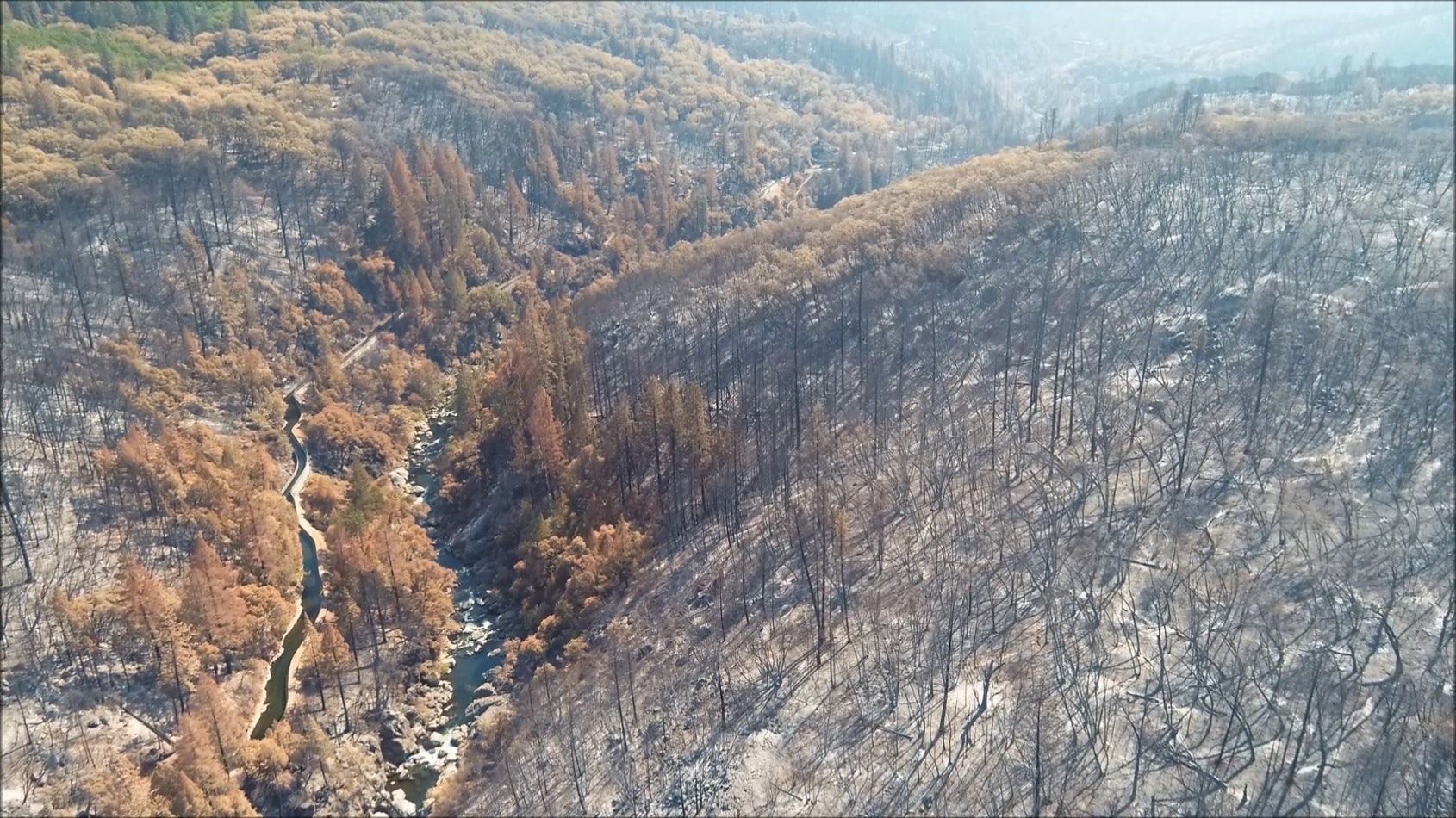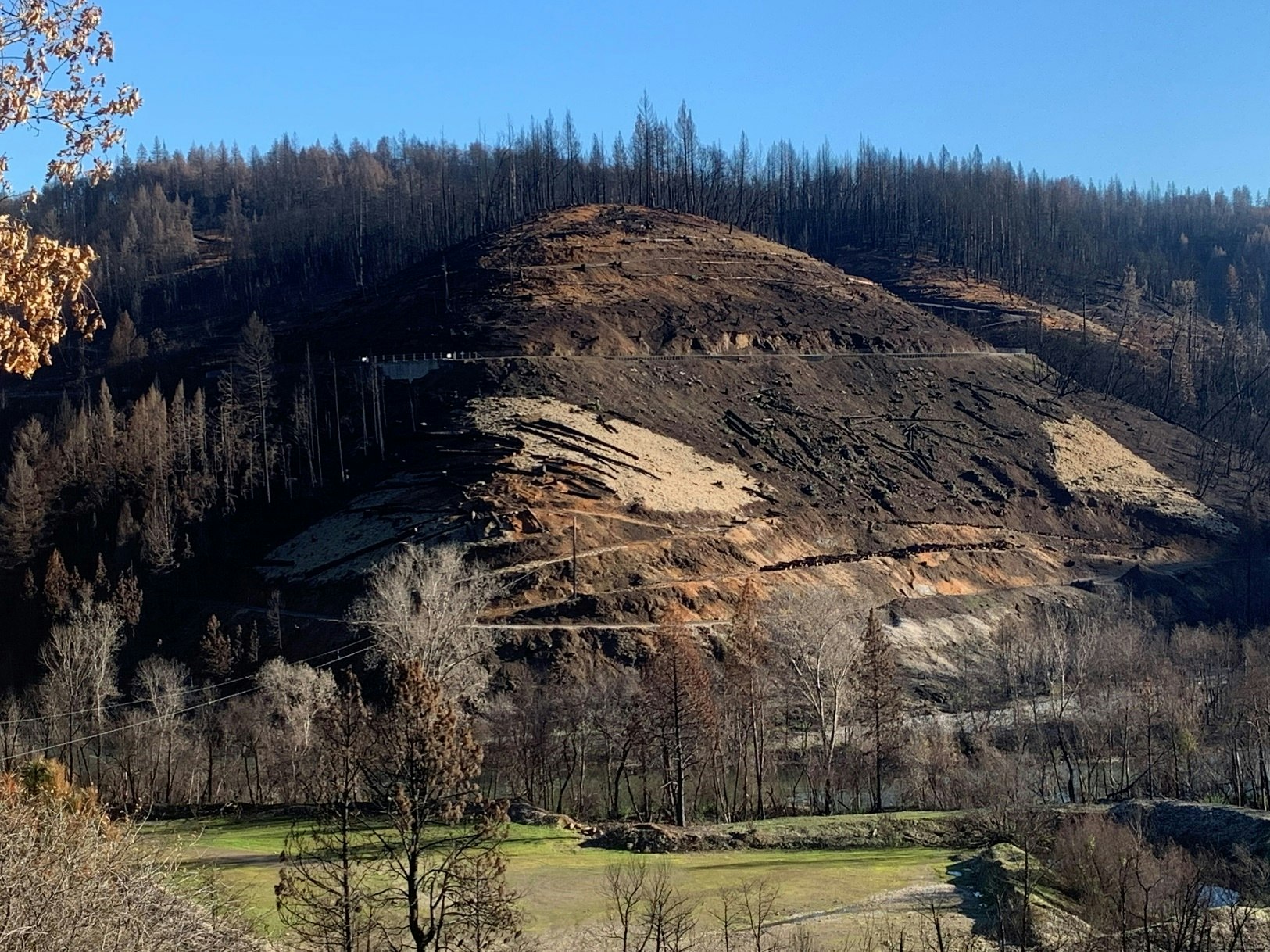NID secures grant funding for Bear River Wildfire Recovery Project

(June 14, 2022) The Nevada Irrigation District (NID) has been awarded $570,000 by the Sierra Nevada Conservancy so the District can continue its work to address burned forest conditions from the 2021 River Fire and improve forest health in the Bear River watershed.
NID’s Bear River Wildfire Recovery Project is located on District-owned lands on the steep slopes of the Bear River canyon, between Chicago Park and Lake of the Pines in Nevada County. This area is integral to water supply infrastructure that NID manages for local communities.
The project, with a total budget of $770,400, will remove burned trees on 150 acres of NID land in a mixed mid-elevation ponderosa pine and hardwood that burned at high intensity in the River Fire.
The work will reduce fire fuels by treating burned and unburned forest areas. It also will expand defensible space adjacent to the communities of Lake of the Pines and Alta Sierra. In addition, the project will safeguard water quality and water supply, and promote sediment attenuation through erosion control measures.
“We are quite pleased to receive this grant funding so that NID can carry out its commitment to improving our watersheds,” said Neysa King, NID’s environmental resources administrator. “Wildfire is the greatest threat to the forest condition and long-term functionality of our watersheds. Projects like this are essential for protecting the watersheds in our care. We can’t forget that healthy watersheds are vital to providing water for our community and our ecosystems.”
The River Fire began at the Bear River Campground in Placer County on Aug. 4, 2021 and scorched 2,619 acres before being fully contained on Aug. 13. The fire had widespread impacts within the Bear River watershed, and dramatically altered the condition of the forest. This included damage to the water supply, water quality and watershed function.
In 2021, NID completed 80 acres of wildfire mitigation actions to remove hazard trees and to address immediate impacts to water system infrastructure, such as canals. In addition, crews worked to masticate, lop and scatter the “black forest” that was left after the fire, and to install erosion control measures. This helped to reduce the potential for excessive erosion, water system repair, impacts to public roads, hazards to people and property, and forest recovery.
View photos -- the Bear River Wildfire Recovery Project

